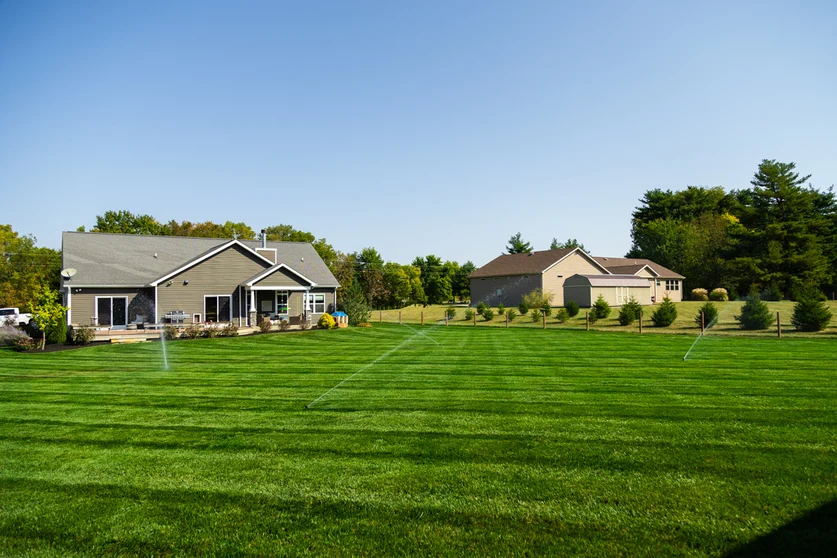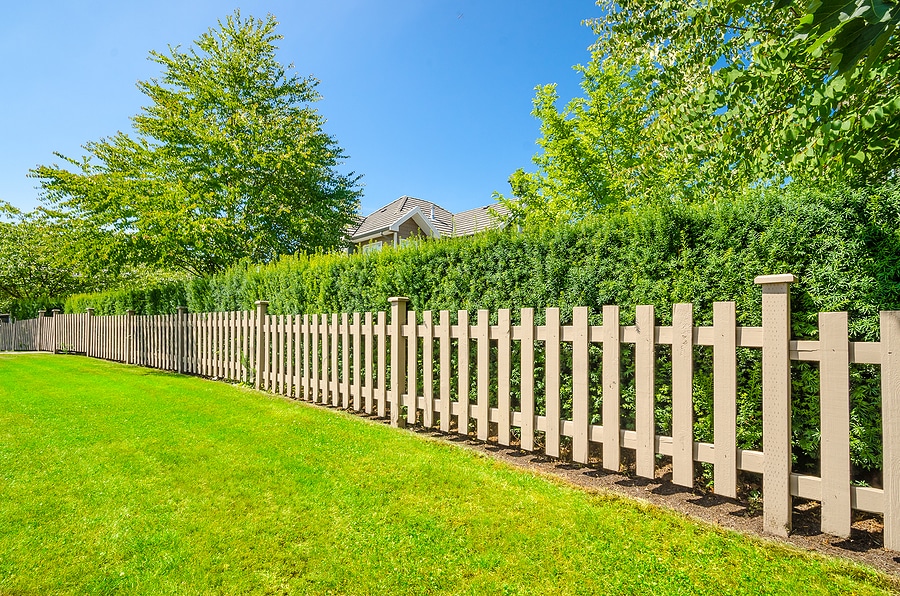You’re driving through your Greencastle neighborhood on a beautiful spring morning, and you can’t help but notice how some lawns look absolutely incredible while others… well, let’s just say they’ve seen better days. Maybe your own lawn falls into that second category, and you’re tired of looking at those brown patches and thin spots that seem to mock you every time you pull into your driveway. If you’ve been wondering what is the best fertilizer for Maryland grass, you’re definitely not alone.
Maryland’s unique climate creates some real challenges for homeowners trying to achieve that thick, green lawn they’ve always wanted. Between our hot, humid summers and cold winters, plus the clay-heavy soil that’s common throughout our region, getting the right fertilizer can feel like solving a puzzle. Here’s the thing though – once you understand what makes Maryland grass tick and what nutrients it really needs to thrive, you’ll be amazed at how much your lawn can transform.
In this guide, you’ll discover exactly which fertilizers work best for Maryland’s most popular grass types, when to apply them for maximum results, and how to avoid the costly mistakes that keep too many homeowners stuck with disappointing lawns year after year.
Understanding Maryland’s Unique Grass Growing Conditions
Maryland sits right in that tricky transition zone where cool-season and warm-season grasses meet, which means we get the worst of both worlds sometimes. Our summers can hit 90+ degrees with crushing humidity, while winters drop below freezing for months. This creates serious stress on cool-season grasses like fescue and bluegrass, which is why choosing the right fertilizer becomes so critical for keeping your lawn healthy year-round.
The soil throughout central Maryland and southern Pennsylvania tends to be heavy clay with a slightly acidic pH, usually between 5.5 and 6.5. Clay soil holds nutrients well, but it also compacts easily and doesn’t drain great, which affects how your grass absorbs fertilizer. These conditions mean your fertilizer needs to work harder and smarter than in other regions – you need nutrients that release slowly during hot weather and won’t burn your grass when it’s already stressed.

Best Grass Types for Maryland and Their Fertilizer Needs
Most Maryland lawns are planted with cool-season grasses that can handle our climate challenges, but each type has specific fertilizer requirements to look its best. Understanding what you’re growing is the first step to choosing the best fertilizer for Maryland grass.
Tall Fescue (Most Common)
- Needs moderate nitrogen levels – too much causes rapid growth and disease problems
- Benefits from slow-release fertilizers with 3-1-2 or 4-1-2 NPK ratios
- Requires extra potassium for heat and drought tolerance
- Best fertilized in early spring and fall when actively growing
Fine Fescue
- Requires less fertilizer than other grass types – over-feeding kills it
- Thrives with light applications of low-nitrogen fertilizers
- Only needs 1-2 fertilizer applications per year maximum
Kentucky Bluegrass
- Demands higher nitrogen levels for thick, green appearance
- Needs consistent feeding through growing season
- Requires fall fertilization to survive Maryland winters
Top Fertilizer Recommendations for Maryland Grass
The best fertilizer for Maryland grass depends on timing, grass type, and what your lawn needs most during each season. Here are the proven options that work consistently well in our climate and soil conditions.
Spring Fertilizers (March-April)
- Slow-release nitrogen fertilizers with 20-25% nitrogen content
- Products containing crabgrass preventer for weed control
- Organic options like milorganite for gentle spring feeding
- Avoid high-nitrogen quick-release fertilizers that promote disease
Summer Maintenance (June-August)
- Light applications of slow-release fertilizers only if needed
- Skip fertilizing completely during drought conditions
- Focus on potassium-rich products for stress tolerance
Fall Fertilizers (September-November)
- Higher nitrogen content (28-32%) for root development
- Winterizer fertilizers with extra potassium
- This is the most important fertilization of the year

Maryland Grass Fertilization Schedule: When to Apply
Timing is absolutely everything when it comes to fertilizing Maryland grass. Apply fertilizer at the wrong time, and you’re basically throwing money away while potentially harming your lawn. The key is working with our climate instead of against it.
Early Spring (March-April) is when your grass starts waking up from winter dormancy. This is the perfect time for your first application using a slow-release fertilizer with pre-emergent herbicide. Soil temperatures hit around 50-55 degrees consistently, which signals your grass to start growing again.
Fall (September-November) is absolutely critical – this is when you want to hit your lawn with the heaviest fertilizer application of the year. Cool weather means your grass can actually absorb and store nutrients without getting stressed, setting it up for both summer survival and winter recovery.
Common Fertilizer Mistakes Maryland Homeowners Make
Even well-meaning homeowners often sabotage their own lawns by making fertilizer mistakes that seem logical but actually cause more harm than good.
Timing and Application Errors
- Fertilizing during summer heat waves when grass is dormant
- Over-fertilizing in spring which causes rapid growth and disease
- Skipping fall fertilization when grass needs energy storage most
- Not watering fertilizer in properly after application
Product Selection Mistakes
- Using cheap, quick-release fertilizers that burn grass in hot weather
- Choosing warm-season grass fertilizers for cool-season lawns
- Ignoring soil pH which affects how well grass absorbs nutrients
- Using too much product thinking more is always better
Professional vs. DIY Fertilization for Maryland Grass
DIY fertilization can work great if you’ve got the time to learn about soil testing, understand different grass types, and stay on top of timing throughout the year. But most busy homeowners in our area end up making expensive mistakes that cost more than hiring professionals in the first place.
The biggest advantage of going professional isn’t just convenience – it’s the knowledge and experience they bring. They know which neighborhoods have clay soil that needs extra potassium, when to skip summer applications during drought stress, and how to adjust fertilizer programs based on weather patterns. Plus, they’re using commercial-grade products that aren’t available to homeowners.
That said, if you enjoy yard work and want to save money, DIY can definitely work. Just budget for some trial and error in your first couple years, invest in a soil test, and be prepared to research your specific grass type thoroughly.
Conclusion
Finding the best fertilizer for Maryland grass doesn’t have to be complicated once you understand our unique growing conditions and work with them instead of against them. The key is choosing slow-release fertilizers appropriate for your grass type, timing applications when your lawn can actually use the nutrients, and avoiding common mistakes.
Remember that fall fertilization is your most important application of the year, spring feeding should be moderate and include crabgrass prevention, and summer fertilizing should be minimal or skipped entirely during hot, dry periods. Whether you choose to handle fertilization yourself or work with a top lawn care service, consistency and proper timing will give you far better results than expensive products applied at the wrong time.
Your lawn has the potential to be the thick, green space you’ve always wanted – it just needs the right nutrients at the right time to get there. Start with a soil test, choose fertilizers designed for Maryland’s climate, and be patient as your grass transforms over the growing season.

Recent Comments